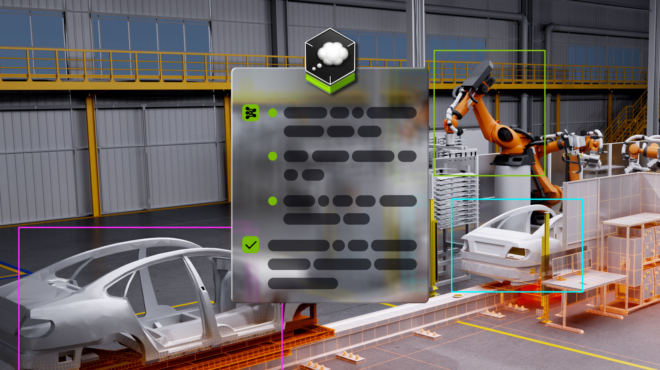NVIDIA unveils Cosmos Reason for “Physical AI” at SIGGRAPH

NVIDIA introduced Cosmos Reason, a new reasoning vision-language model built to power physical AI—robots and vision agents that perceive, plan, and act in the real world—unveiled alongside neural rendering and world-simulation advances at SIGGRAPH 2025.[3] The company also rolled out Omniverse NuRec 3D Gaussian splatting libraries for large-scale world reconstruction and updates to its Metropolis vision AI platform, positioning simulation-plus-AI as the backbone for embodied systems and smart spaces.[3]
Why this matters
Physical AI demands agents that can reason with prior knowledge, physics, and common sense while navigating 3D environments—capabilities traditional VLMs struggle to deliver reliably.[3] By pairing high-fidelity simulation, neural graphics, and a new reasoning VLM purpose-built for perception-action loops, NVIDIA is targeting faster training, safer deployment, and better generalization for robots, autonomous vehicles, and industrial vision.[3]
What NVIDIA announced
- Cosmos Reason: a reasoning VLM designed for physical AI, enabling robots and vision agents to interpret scenes, infer object dynamics, and plan actions with embedded physics understanding and commonsense priors.[3]
- Omniverse NuRec: new 3D Gaussian splatting libraries for large-scale, photoreal world reconstruction to create training “digital twins” where agents can safely learn by trial and error.[3]
- Metropolis updates: enhancements to NVIDIA’s end-to-end vision AI platform, aligning with the physical AI stack from perception to decision-making in production environments.[3]
- Integration with Nemotron and broader simulation tooling that links neural rendering, reinforcement learning, and generative 3D content creation for efficient data generation and domain randomization.[3]
How it compares
Historically, robotics pipelines relied on task-specific perception models and offline planners; recent VLMs boosted perception but faltered on causal reasoning and transfer from sim to real.[3] NVIDIA’s approach combines:
- High-fidelity simulation (for safe, scalable practice),
- Neural graphics and synthetic data (to reduce the real-data bottleneck), and
- A reasoning VLM tuned for physical interactions (to close the perception-to-action loop).[3] This integrated stack targets fewer on-robot trials, lower deployment risk, and broader task generalization versus piecemeal solutions.[3]
Early use cases
- Robotics: dexterous manipulation and adaptive navigation where precise force and contact modeling matter (e.g., assembly, logistics).[3]
- Autonomous vehicles: scenario synthesis and edge-case training using photoreal, physics-accurate worlds.[3]
- Smart spaces and industrial vision: anomaly detection and process control that require context-aware reasoning, not just object detection.[3]
Expert take
NVIDIA researchers emphasize a tight coupling: advances in simulation are accelerating AI, and AI is in turn advancing simulation fidelity—a “powerful combination” for embodied intelligence, according to Sanja Fidler, NVIDIA’s VP of AI Research.[3] Ming-Yu Liu highlights the need for a “parallel universe” of high-fidelity virtual environments to ensure skills learned in sim transfer to reality.[3]
What’s next
Expect rollouts across Omniverse and Metropolis partner ecosystems, with developers tapping NuRec for rapid scene reconstruction and Cosmos Reason for closed-loop perception-to-action tasks. If results hold in real-world pilots, physical AI could see reduced data and safety costs, faster time-to-value in factories and warehouses, and more reliable autonomous systems.[3][2]
How Communities View NVIDIA’s “Physical AI” Push
Discussion centers on whether Cosmos Reason and new simulation stacks finally bridge the sim-to-real gap for robotics and autonomous systems.
-
Performance optimism (≈40%): Engineers and researchers on X argue that a reasoning VLM purpose-built for physical interactions is the missing piece, citing better scene understanding and common-sense physics as key. Posts from NVIDIA researchers and ecosystem partners (e.g., @SanjaFidler, @NVResearch) highlight integrated pipelines from NuRec to Metropolis as a step change for embodied AI.
-
Healthy skepticism (≈25%): Roboticists on r/robotics and X question real-world robustness, noting prior VLMs struggled with causal inference and long-horizon planning. They call for public benchmarks and third-party demos before declaring a breakthrough.
-
Builder excitement (≈20%): Developers in r/Omniverse and r/MachineLearning praise faster world reconstruction with 3D Gaussian splatting and the promise of easier synthetic data workflows. Tooling that reduces data collection and labeling is seen as a practical win for startups.
-
Safety and governance focus (≈15%): Policy watchers in r/Futurology and AI safety voices on X ask about fail-safes, evaluation under distribution shift, and alignment in agentic systems operating near humans.
Overall sentiment: cautiously positive. Notable voices include @SanjaFidler emphasizing the simulation-AI coupling, and applied AI accounts pointing to potential gains in robotics training efficiency and edge-case coverage. Reddit threads request open benchmarks and ablations separating the impact of Cosmos Reason vs. simulation fidelity.